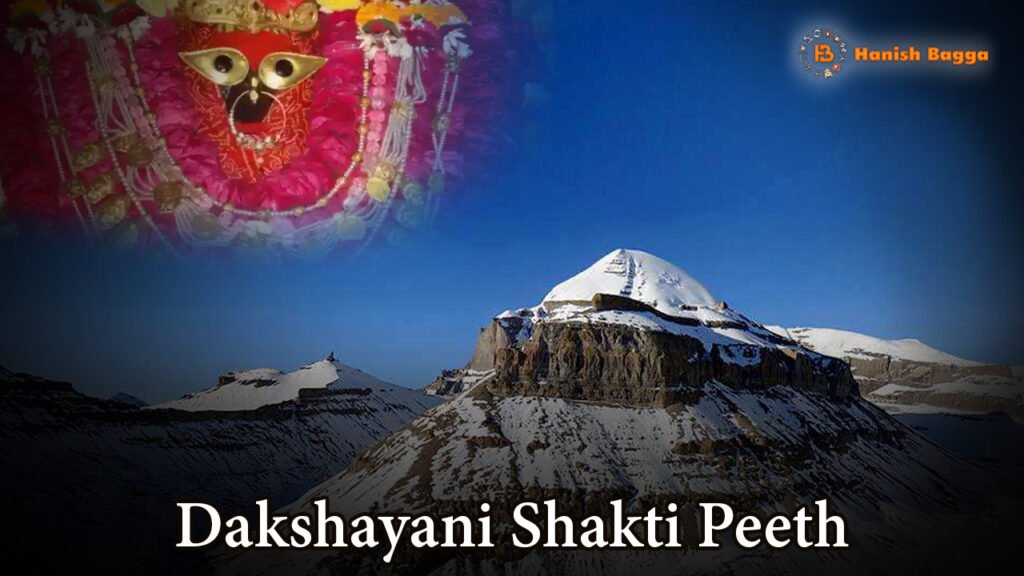Introduction to Dakshayani Shakti Peeth:
The Dakshayani Shakti Peeth is one of the 51 revered Shakti Peeths scattered across the Indian subcontinent. These sacred sites are dedicated to the worship of Goddess Shakti, the divine feminine energy in Hinduism. The Dakshayani Shakti Peeth holds a special place among these holy sites, drawing devotees from far and wide who seek the blessings of the goddess.
The Legend Behind Dakshayani Shakti Peeth
The story of the Dakshayani Shakti Peeth is deeply rooted in Hindu mythology. According to legend, it is believed that when Lord Shiva carried the lifeless body of his wife Sati (also known as Dakshayani) across the universe in grief, parts of her body fell at different locations. These spots where Sati’s body parts fell became the Shakti Peeths.
At the Dakshayani Temple, it is said that Sati’s left ankle fell. This event imbued the site with divine energy, making it a powerful center for worshipping the goddess in her form as Dakshayani.
Significance of Dakshayani Shakti Peeth
The Dakshayani Temple holds immense spiritual significance for devotees. It is believed that worshipping at this sacred site can:
- Bestow divine blessings and protection
- Remove obstacles from one’s life
- Grant spiritual enlightenment
- Fulfill wishes and desires
- Provide strength and courage to face life’s challenges
Many devotees visit the Dakshayani Shakti Peeth to seek the goddess’s blessings for success, prosperity, and overall well-being.
Location and How to Reach
The Dakshayani Shakti Peeth is located in Kanyakumari, Tamil Nadu, at the southernmost tip of mainland India. Here’s how you can reach the temple:
1. By Air: The nearest airport is Trivandrum International Airport, approximately 90 km away. From there, you can take a taxi or bus to Kanyakumari.
2. By Train: Kanyakumari has its own railway station well-connected to major cities in India. From the station, the temple is a short distance away and can be reached by auto-rickshaw or taxi.
3. By Road: Kanyakumari is well-connected by road to other parts of Tamil Nadu and neighboring states. Regular bus services are available from major cities.
Architecture and Temple Structure
The Dakshayani Shakti Peeth temple showcases the magnificent Dravidian style of architecture, common in South Indian temples. Some notable features include:
- Towering gopuram (temple tower) adorned with intricate carvings
- Spacious mandapam (hall) for devotees to gather
- Sanctum sanctorum housing the main deity
- Beautiful stone sculptures depicting various Hindu deities and mythological scenes
The temple’s architecture not only serves as a place of worship but also stands as a testament to the rich cultural heritage of the region.
Rituals and Worship at Dakshayani Shakti Peeth
The temple follows a set of daily rituals and special ceremonies throughout the year. Some of the important rituals include:
1. Daily Puja: The priests perform daily rituals to honor the goddess, including abhishekam (sacred bath), aarti (light offering), and naivedyam (food offering).
2. Navratri Celebrations: The nine-day festival dedicated to the goddess is celebrated with great fervor at the Dakshayani Shakti Peeth.
3. Full Moon Puja: Special prayers and offerings are made on full moon days.
4. Fridays: Considered auspicious for worshipping the goddess, many devotees visit the temple on Fridays.
Devotees can participate in these rituals or offer their prayers individually. It’s advisable to check with the temple authorities for specific timings and guidelines.
Best Time to Visit
While the Dakshayani Shakti Peeth can be visited throughout the year, the best time to plan your visit is:
- October to March: The weather is pleasant during these months, making it comfortable for travel and temple visits.
- During Navratri: If you wish to experience the grand celebrations and witness the temple in its full glory, plan your visit during the Navratri festival (usually falls in September-October).
Avoid visiting during the peak summer months (April to June) as the temperatures can be quite high in Kanyakumari.
Want to consult an astrologer: connect with hanishbagga.com
Nearby Attractions
While visiting the Dakshayani Shakti Peeth, you can explore other nearby attractions:
1. Vivekananda Rock Memorial: A monument dedicated to Swami Vivekananda, located on a small island off the coast.
2. Thiruvalluvar Statue: A 133-feet tall statue of the Tamil poet and philosopher Thiruvalluvar.
3. Kanyakumari Beach: Enjoy the unique experience of watching the sunrise and sunset at the same beach.
4. Padmanabhapuram Palace: An ancient wooden palace located about 40 km from Kanyakumari.
5. Suchindram Temple: A beautiful 17th-century temple known for its architectural beauty and musical pillars.
Conclusion to Dakshayani Shakti Peeth:
The Dakshayani Shakti Peeth stands as a beacon of spiritual energy, drawing devotees and tourists alike to experience its divine aura. Whether you’re a spiritual seeker or a curious traveler, a visit to this sacred site offers a unique opportunity to immerse yourself in the rich tapestry of Hindu mythology and culture. As you plan your journey to the Dakshayani Temple, prepare for an enriching experience that goes beyond mere sightseeing – it’s a journey into the heart of India’s spiritual heritage.
For interesting astrology related videos, subscribe us on Youtube
FAQs about Dakshayani Shakti Peeth:
Q1: What is the significance of Dakshayani Temple?
Ans: It is one of the 51 Shakti Peethas where Sati’s left ankle is believed to have fallen, making it a powerful spiritual site.
Q2: Are there any dress codes to follow while visiting the temple?
Ans: It’s advisable to dress modestly. Men should wear shirts and full-length trousers, while women can wear sarees, salwar kameez, or modest western wear.
Q3: Can non-Hindus visit the Dakshayani Shakti Peeth?
Ans: Yes, the temple is open to visitors of all faiths. However, respect for local customs and traditions is expected.
Q4: Is photography allowed inside the temple?
Ans: Generally, photography is not allowed inside the main sanctum. It’s best to check with the temple authorities about photography rules in other areas.
Q5: Are there accommodation facilities near the temple?
Ans: Yes, Kanyakumari has a range of accommodation options from budget hotels to luxury resorts to suit different preferences and budgets.

